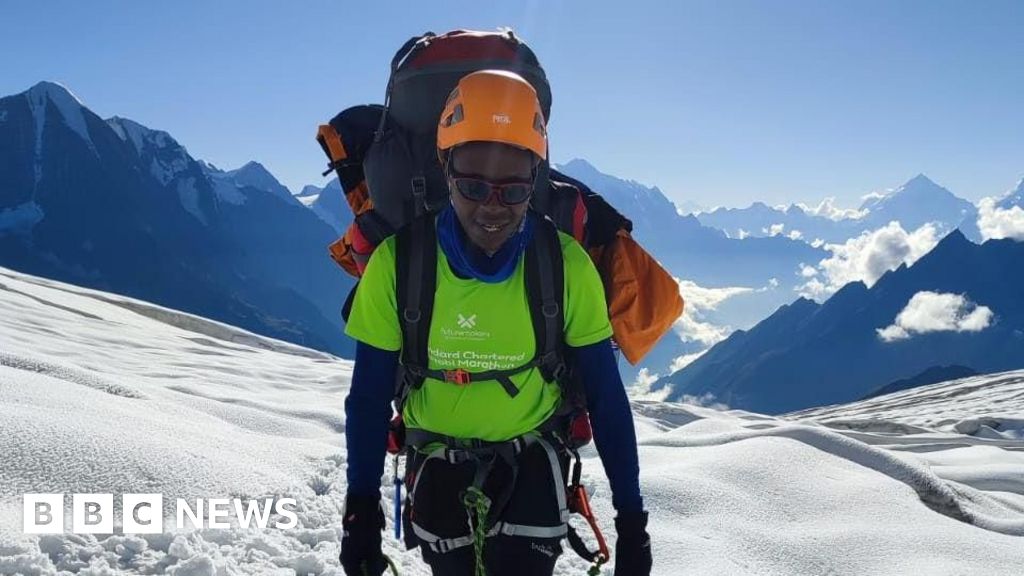The family of a Kenyan climber who died on Mount Everest last week say his remains will remain on the mountain where he died.
Joshua Cheruyot Kirui Died while on a daring mission to reach the summit of Mount Everest without supplemental oxygen.
The 40-year-old climber and his Nepalese guide fell into a crevice about 48 meters (160 feet) below the 8,849-meter peak.
Kirui’s family said it would be too risky for rescue teams to recover his body from such a high altitude.
However, Nepal’s tourism officials said it was illegal to leave the body on the mountain.
Climbing Mount Everest, the world’s highest peak, is considered extremely difficult and dangerous even for experienced climbers.
Kirui was attempting to become the first African to climb Mount Everest without additional oxygen, accompanied by Nepali climber Nawang Sherpa.
Mr. Sherpa is still missing.
Kirui’s family said in a statement on Wednesday that after extensive consultation and “careful consideration of all circumstances” they had made the “difficult” decision to allow his remains to rest at the mountain.
“Retrieving his body from such a height would be risky for the rescue team and his family does not want to endanger any lives,” the statement read.
“Cheruyot had a deep love for the mountains, and the mountains loved him back. We take comfort in knowing he is resting in his happy place,” the statement added.
However, his family said memorial services would be held in the capital Nairobi and in the village of Cheputrit in the Rift Valley region.
There are also concerns about the cost of transporting his body back to his hometown for burial.
Retrieving the body would cost around $190,000 (£150,000) and would require around eight people to climb the mountain to carry out the task.
A Nepalese official said Kirui’s expedition would need to submit a letter of commitment saying they would bring his body down the mountain next climbing season.
“This time it was towards the end of the spring climbing season, so it was logistically impossible to bring the body down.”
Operators need to provide letters of commitment to the department as soon as possible, they said.
The official said Mr Kirui’s body was accessible.
Dambar Parajuli, president of the Nepal Adventure Operators Association, said there is industry consensus that easily accessible bodies need to be removed from the mountains and brought down.
“But we also told the government that the bodies that fell into the crevices, or rather, into Tibet (Mount Everest runs along the border of Nepal and China), or buried deep under the snow cannot be brought down. “
However, most families who have lost loved ones on Everest would rather leave the bodies behind.
It is estimated that the bodies of nearly 200 of the 330 climbers who died on the world’s highest peak remain there.
Banker Kirui’s climb has been closely watched in Kenya, and other climbers have frequently posted online updates about the attempt.
Ahead of the fateful climb, Kirui told the BBC he had done extensive physical preparation before taking on the challenge.
In his latest Instagram post, he expressed confidence that he can conquer Everest without extra oxygen.
However, he told the BBC he received emergency oxygen support from Mr Sherpa and had an emergency evacuation hood in case he encountered difficulties.
Most people climb Everest in April and May, when weather conditions are most favorable.
Four climbers have reportedly died so far this season, which is just days away from ending.

